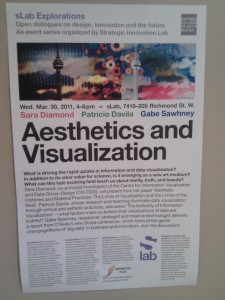[This update on my Twitter cluster visualization project is also the final report for the independent study I’ve been doing on infoviz. I’ll definitely pick up this work again soon, but not in the next couple of weeks. A previous post with some of my early tests and rationale is here. A walkthrough on how to get started making these is here.]
For the past few months I’ve been absorbing lots about information visualization, and in the past four weeks I’ve been doing a bunch of work specifically on visualizing clusters based on the Twitter network. The goal of this is described in a previous post. Along the way, I’ve learned a weird bunch of other things: tuning MySQL performance, the advantages of the Google Social Graph API over the Twitter API, how to get around the fact that many of OCAD’s lab computers are still running OS 10.5, how to make a screencast, etc. I want to take this work in a bunch of other directions (and will, once I’ve dealt with my other deadlines). Here’s some of the more interesting maps that I produced along the way: Continue reading

